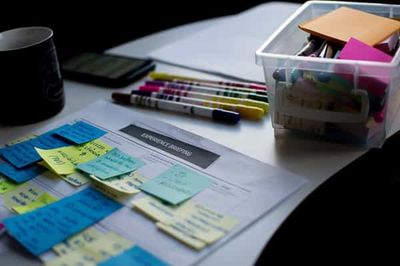Key Functions and Principles of Lesson Planning

Lesson planning is an indispensable part of successful lessons. Generally speaking, lesson plans have various functions that are conducive to the classes.
Table of Contents
What should a lesson plan include?
Are you planning to teach English abroad?
Check out what our course grads say in our many video testimonials!
This post was written by our TEFL certification graduate Juan W.
Listen to this blog post:
The function of a lesson plan
First and most importantly, lesson plans can help teachers think and deliver classes logically through different stages of the classes. It can also give teachers hints needed. When teachers plan lessons, there are several aspects that need to be taken into consideration, such as lesson objectives, possible difficulties and skill and so on. Second, It's a record of classes that have been done and materials have been used. On the one hand, even though teachers have good memory, it is almost impossible for them to remember the classes they taught several months or years ago. On the other hand, if the teacher is sick, other teachers can help deal with emergencies with lesson plans. Thirdly, lesson plans are working documents that can help teachers keep on the lesson objectives. In my experience, sometimes I can't finish all materials that I have prepared for the students. However, I can keep them in lesson plans and teach students in the next class if it is very necessary for them to practice more on certain target languages.
Also read: The Importance of Lesson Planning for ESL Teaching
Lesson planning principles
When writing a lesson plan, some principles that teachers should bear in mind. First, it should be structural and logical, and try to use the same structure in classes. For example,I use the structure "review the last lesson - learn new target languages - giving feedback". Second, keep it simple.In my opinion, lesson plans should not be wordy. Teacher can not rely on them too much or the class will lose flexibility. Third, write the anticipated time for each section and stage and try to control the time well, or teachers can not finish the targeted objective for the lessons. Fourth, check the balance of skills. In the TEFL course, I learned two skills: receptive skills, which refers to listening and reading skills, and productive skills-speaking and writing skills.

What should a lesson plan include?
Standard lesson plans should cover the following basic information: student's (one to one) / students' name, number of students, teacher's and observer's name, the date and time of the lesson, class level, learning objectives, personal aims (teacher's aims), key language points, students' and teacher's anticipated difficulties, the ways/techniques to overcome those difficulties, teaching aid, procedures, phases, time for each procedure, interaction (T-T/T-S/S-S).
The ESA method
Through my TEFL course, I learned three kinds of ESA lesson structures that are often used in teaching: "Straight-arrow" ESA lesson, "Boomerang" ESA lesson and "Patchwork" ESA lesson. Here, "ESA" is short for Engage, Study and Activate. No matter which kind of ESA structure is used in teaching, all classes should start with Engage and end with Activate. Some teaching techniques are shown in the following Paragraphs:
Also read: 5 Activities for Using Movies in the ESL Classroom
The "Engage" phase is designed to arouse students interest, lead them to think in English and get them ready for the class. In my experience, "Engage" is often used as a "warm-up" part at the beginning of the class. Games, pictures, stories, music can be used as tools to engage students. If possible, it would be better if teachers link this part with the target languages of topics that students are going to learn later.
The "Study" phase is designed to let students focus on the target language. In this phase, teachers usually start with elicitation. When eliciting information from students, teachers should write it down on the board, which might be useful for the following activities. Then, teachers should present the target language point. After that, some grammar exercises or drill practice can be used to improve the language accuracy. One thing that teachers should bear in mind is that students should be asked some ICQ (Instruction-checking questions) before handing out the worksheets or handouts. Lastly, teachers should check students understanding and answers then give correction if needed.

The "Activate" phase is designed to encourage students to use the target language they learned in the above two phases. Several activities like role-play, group discussion or debates can be conducted. Here, the focus is on fluency rather than accuracy on grammar or pronunciation. The activities should be communicative for students. Teachers should not interrupt students. Instead, they should be monitors and taking some notes of common mistakes. After finishing this part, teachers should give students feedback on their performance: what they have done well and what they need to work on. While giving feedback, teachers should follow the principle of "Feedback sandwich":praise, correction, praise.
Above, I wrote down the key information about lesson planning that I have learned in the course. Indeed, I learned a lot from the course, and I am trying to put tis knowledge into practice.
Are you planning to teach English abroad?
Apply now & get certified to teach english abroad!
Speak with an ITTT advisor today to put together your personal plan for teaching English abroad!
Send us an email or call us toll-free at 1-800-490-0531 to speak with an ITTT advisor today.
Related Articles:
- Top Online Lesson Plan Resources for New and Advanced Teachers
- Advantages of Teaching Adult Students and Implications on Teacher's Methodology
- How To Write The Perfect ESL Lesson Plan
- Online or In-Class - Which TEFL Course Should You Take?
- How To Write The Perfect ESL Lesson Plan
- Getting Student Placement Right - The Best Desk Arrangements for EFL Students



